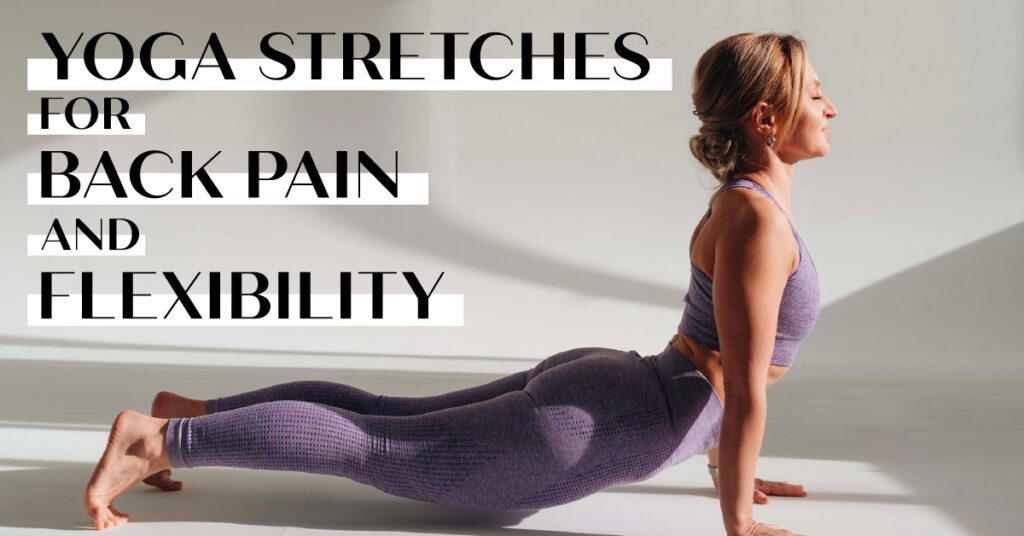10 Minute Yoga for Beginners at Home

Also available in
A “micro session” of 10 minutes can change your life. For that 10 minute yoga for beginners, You fully engross yourself. Yoga is a mind-body approach that provides a broad range of physical and emotional health rewards, making it particularly valuable for persons who only have time for a shorter workout.
There are several benefits to practicing mindfulness every day, including enhanced mental ability, less stress, greater flexibility and breathing capacity, and managed to improve blood pressure, diabetes, and neck, and back discomfort.
Your yoga practice at home not only gets your body ready, but also gets your mind in the appropriate frame of mind. You can feel energized and successful after this quick 10-minute yoga session, which is a terrific sensation to carry throughout the rest of your day. Additionally, you do not require much. You only need a mat and a few minutes to enjoy all the tremendous advantages of a morning yoga exercise.
10 Minute Yoga for Beginners
1. Sun Salutation (Surya Namaskar Asana) :

Prayer pose (Pranamasana) :
First, stand up straight. Then raise both hands parallel to the shoulders. Move both palms upwards. The back sides of the palms should stick to each other. Then bring them to the front in the same position. After that, while rotating downwards, stand in the posture of Namaskar.
Raised Arms pose (Hastauttanasana) :
Now take a deep breath and move both hands upwards. Now bend the hands backward from the waist, and bend the arms and neck backward as well. Hand-to-foot pose (Hasta Padasana): In this position, slowly exhale while bending forward. Bring the hands down along the neck, touch the ears, and touch the earth with the hands. Now stay in this position for a few moments and keep the knees straight.
Equestrian pose (Ashwa Sanchalanasana) :
In this position, keep the palms on the ground. While inhaling, move the right leg backward. Now lift the neck upwards.
Stick pose (Dandasana) :
Exhaling slowly, take the right leg back as well. The heels of both feet should be together. Stretch the body backward and try to touch the ankles to the earth. Raise the buttocks as high as possible. Bending the neck down, apply the chin to the groin. Practice focusing on the ‘Sahasrar Chakra’.
Salute with Eight Parts or Points (Ashtanga Namaskara) :
In this position, inhale slowly and keep the body parallel to the earth as you do at the time of Dandavat Pranam, just like that keep the body parallel to the earth. Now put the knees, chest, and chin on the earth. Raise the chest slightly. Now exhale slowly.
Cobra pose (Bhujangasana) :
In this position, while breathing slowly, pull the chest forward. Keep the hands straight, palms facing the earth. Now move the neck slowly backward. The knees should touch the earth and the feet should stand.
Mountain pose (Parvatasana) :
This position is similar to the fifth position. In this position, while exhaling slowly, move the left leg backward. Keep in mind that in this situation the heels of both feet should be together. Now by bending the neck down, try to put the chin in the throat.
Equestrian pose (Ashwa Sanchalanasana) :
This situation is similar to the fourth situation. In this position, rest the palms on the ground. While inhaling, move the right leg backward. Now raise the neck up.
Hand to Foot pose (Hasta Padasana) :
This situation is similar to the third situation. In this position, slowly exhale while bending forward. Bring the hands down along the neck, touch the ears, and touch the earth with the hands. Now stay in this position for a few moments and keep the knees straight.
Raised Arms pose (Hastauttanasana) :
This situation is similar to the second situation. While inhaling slowly, stretch both hands up by touching the ears and bend the arms and neck backward.
Prayer pose (Pranamasana) :
This position will remain the same as in the first position.
Benefits :
- It makes the nervous system powerful and makes the energy center energetic.
- Its practice develops mental peace and intelligence and increases memory power.
- It cures respiratory diseases, obesity, spinal cord, and joint pain.
- This gives strength to the stomach, liver, kidney, small and large intestines, and diseases like constipation, piles, etc.
2. Alternate Nostril Breathing (Anulom Vilom) :
In this pranayama, the breath is controlled with the help of the nostrils. It encourages the mind to attain a higher level of concentration and thoughts. The physical gives more energy and oxygen to the body and helps calm your nerves and improves blood circulation.

Hold your right nostril with the thumb and inhale through the left nostril. Now close the left nostril with the ring finger and open the right nostril and exhale. Now breathe through the right nostril only. Then open the left nostril and exhale. The nostril from which you exhale has to be inhaled.
Benefits :
- Heart problems, high blood pressure, bent ligaments, paralysis, nerve-related, depression, migraine, asthma, sinus, and allergies can be cured by Anulom-Vilom.
Caution :
- If you are doing this for the first time then it should be done slowly and little by little. Patients with high blood pressure should avoid holding their breath.
3. Reclined Thunderbolt Pose (Supta Vajrasana) :
‘Supta’ means ‘sleeping’, that is, sleeping in the position of Vajrasana.

That’s why this posture is called Supta-Vajrasana. Sits with both legs spread in front, both feet together, hands by side, waist straight, and vision in front. After sitting in Vajrasana, keep such a gap between both legs behind that the buttock touches the ground, then slowly lie down on the ground with the support of both elbows. Take both hands behind you and keep the head on the palms.
To come back to the previous position, keep the hands next to the thighs and sit up with the help of both elbows.
Benefits :
- This asana is beneficial for the knee, chest, and spine.
- With this asana, there is a stretch in the abdomen, due to this stretch, blood flows into the abdominal vessels and strengthens them.
- It provides benefits for all types of abdominal diseases. Along with this, belly fat also decreases.
Caution :
- Those who have complaints of air disorders in the stomach, and back pain, should not do this asana.
- Lie on the ground only after the buttocks are on the ground. Go as easily as you can while lying down.
- Initially, if there is difficulty in keeping the knees together, then you can keep them separately, after practicing slowly, try to join the feet.
- While lying on the ground, the knees should not rise up, keep them completely on the ground.
4. Hare Pose (Shashankasana) :
Shashanka in Sanskrit means ‘Moon’ hence it is also called Moon Mudra.

To reach the stretch – Sit in Vajrasana by bending both legs back from the knee.
The toes of the feet should touch each other. Sit up straight on your toes. Now bring the knees in front of each other. The knees should touch each other. Raise both hands up straight by touching the ears. Now bend the body in front and try to touch the ground with your forehead and palms.
To get back to normal -To release, slowly return to the normal position of Vajrasana. You can do this asana at least 2-3 times.
Benefits :
- It stretches the rectus muscle of the abdomen and helps in improving digestion.
- It is beneficial in constipation with high blood pressure.
Caution :
- Without sitting back up, do not move the ankles from your position.
- For people who suffer from hip pain, this is not for them.
Tips for a Successful 10 Minute Yoga for Beginners
- Find a quiet and clutter-free area for your practice.
- Aim to practice yoga daily, even if it is just for 10 minutes. Consistency will help you reap the full benefits of yoga.
- Pay attention to your breath throughout the practice. Deep, mindful breathing amplifies the benefits of yoga.
- Do not push yourself into uncomfortable positions. Modify the poses to suit your body’s capabilities.
- During the practice, let go of distractions and be fully present in the moment.
Frequently Asked Questions (FAQs)
Is 10 minutes of yoga a day enough?
Not only is 10 minutes of yoga sufficient, but it also allows you more chances to enjoy yoga’s wellness, endurance, and relaxation advantages on a daily basis, if you so desire.
Who should not do yoga?
Yoga should not be attempted when you are sick, exhausted, in a panic, or under excessive stress. Regular yoga activity, especially yoga postures, should be avoided by women during their periods. Instead, you could perform pranayama and breathing exercises. Avoid performing yoga right after eating.
What is the best yoga for older beginners?
Find the yoga style that is most effective for you: Due to their being slower paced, hatha yoga, restorative yoga, and yoga with chair postures are normally more appropriate for elderly people. They entail maintaining positions for longer intervals.
Should you drink water before yoga?
Before beginning your practice, drink some water to assist you in getting deeper into each asana without facing a chance of disorientation. Additionally, you won’t have to worry about pausing your rhythm or attention to get a drink of water if you want to concentrate on flow.
Is yoga better in the morning or before bed?
According to Ayurveda, you need to get up around 4 and 6 AM while the rest of the world is still asleep and perform meditation and yoga poses. In modern society, it is advised to do yoga either first thing in the morning or in the early hours of the evening.
Empower your mind and body with our quick 10 minute yoga for beginners. Do not forget to share this article and inspire others to embrace the path to inner harmony.






